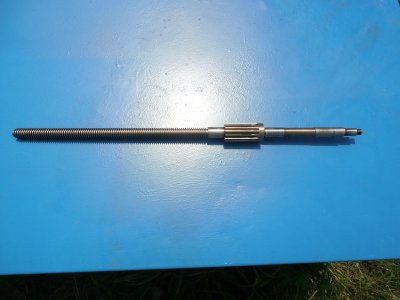- Joined
- Aug 20, 2011
- Messages
- 527
Rafe,
I don't own an SB and ............. Same principle should apply to the compound.
Robert D,
Thanks for the information Robert, I am thinking of taking some of the play out and calling it good ....Before the nut stripped I had a little over a full turn of backlash
that is about as extreme as it gets before failure, and fail it did ....so with a new nut and screw It should be a drastic improvement and I am thinking I may put a thin spring washer to the right of the gear on the shaft (see shaft on blue box)...another sleeve goes over the shaft and mates with that flat surface,and the play shows up there when the dial is tight and on the dial when that area is tight, I don't see what that could harm I'll shoot for .005 play


